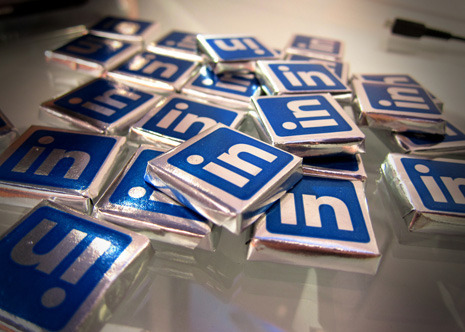LinkedIn's I.P.O.: Party Like It's 1999?

Newt Gingrich is busy self-destructing; Osama bin Laden is no more; Morgan Stanley is rolling out a new Internet I.P.O., which investors are fighting to get their hands on. Am I the only one feeling a bit like I've fallen asleep for twelve years and awoken in May 1999?
Shares in LinkedIn, a networking site for yuppies, will be priced this evening and start trading tomorrow morning. The issue price has already been raised from $32-$35 to $42-45—a big jump—and it wouldn't be a great surprise to see the stock trading at $55 or $60 by tomorrow evening. If the stock does pop and then holds up, we can expect even bigger I.P.O.s in the coming months from the likes of Facebook, Groupon, and Zynga.
Having written an entire book about the original dot-com bubble, I'm trying to resist the urge to say this is a 2.0 version of the same. For several years now, the I.P.O. market has been effectively closed to U.S. Internet companies, and the only cash-out option for entrepreneurs and venture capitalists has been selling to a big public company, such as Google or Microsoft. This didn't make much sense. The likes of LinkedIn and Groupon aren't Webvan and Pets.com. They are real companies, with real competitive advantages, and they operate in a sector of the economy where the United States has a big lead. It is hardly surprising that individual and institutional investors would want to own some of these companies. The shocking thing is that the I.P.O. market has remained closed for so long. But after the excesses of 1998-2000, this was probably inevitable.
Still, the parallels with the late nineteen-nineties are hard to avoid, beginning with the valuation being placed on the company (roughly $4.5 billion at the issue price) and the involvement of Morgan Stanley and Merrill Lynch, which is also acting as an underwriter. (These days, the firm is known as BofA Merrill Lynch.) To be sure, the legendary Internet stock analysts Mary Meeker and Henry Blodget are no longer playing a role, but wait—that isn't quite true. Having been barred from the securities industry, Blodget is now a media entrepreneur. (Meeker is a venture capitalist.) And on Blodget's lively Business Insider site, I just read an article by an anonymous money manager entitled: "Here are 10 Reasons Why I Am Going To Load The Boat On LinkedIn's IPO."
Actually, the piece makes some sound points—even if it was written by somebody who has been promised an allocation of stock and is planning to flip it. With more than a hundred million registered users, LinkedIn is less a social network than a jobs and recruitment network. According to its prospectus, almost four thousand companies used the site in 2010, paying an average annual fee that the Business Insider article put at $8,000. People looking for a job pay from twenty to fifty dollars a month to have their profile listed and matched with potential hirers. As the prospectus repeats numerous times, this is a business where network effects are potentially very powerful. The more recruiters use the site, the more useful it will become to job-seekers, and vice versa.
From an economic perspective, it is a network externalities story and a credible one. But is LinkedIn worth five billion? (That would be approximately its capitalization at a stock
price of $50.) Last year, its revenues doubled to $243 million. Assuming revenues double again in 2011, a five-billion-dollar valuation would amount to twenty times revenues, which seems more than a tad high. Salesforce.com, the cloud-computing firm that many consider a bubble stock, trades at ten times revenues. Google trades at five-and-a-half times its sales. Yes, these are more mature companies than LinkedIn is, but it isn't exactly a stripling either. The site launched in early 2003, and, by some metrics, its growth rate is no longer accelerating.
As for earnings, unlike many of the original dotcoms, LinkedIn does have some: $15.4 million in 2010 and $2.08 million in the first quarter of this year. But the firm says it isn't expecting to be profitable in the next couple of years, when it plans on ramping up its investments. Dividends? Don't be silly. The prospectus says none will be issued for the foreseeable future.
In fact, you can be pretty sure that LinkedIn will be a public company where the voice of ordinary shareholders will be largely ignored. Mimicking Google and other technology companies, it is setting up a dual-stock structure that reserves most of the voting rights for insiders, including Reid Hoffman, the firm's founder, and various venture-capital investors. As the V.C.s cash out, Hoffman, who currently owns twenty per cent of the company, could well end up with sole voting control—a fact spotted by the Financial Times' Richard Waters.
If that's the sort of company you want in your retirement portfolio, go ahead and contact your broker about buying some LinkedIn stock. But call early: he's probably busy.
Photograph by Nan Palmero.
John Cassidy's Blog
- John Cassidy's profile
- 56 followers



